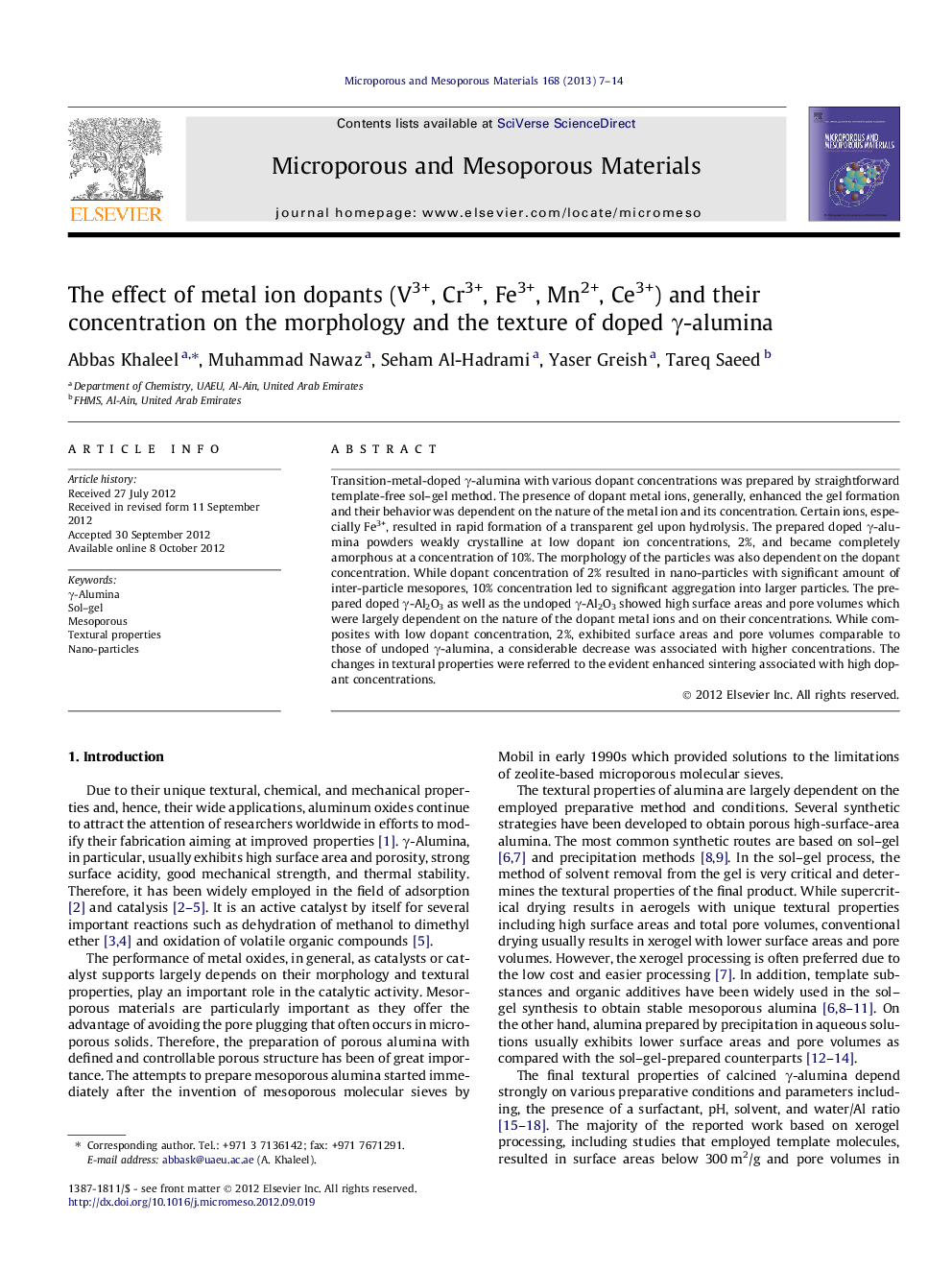| Article ID | Journal | Published Year | Pages | File Type |
|---|---|---|---|---|
| 73652 | Microporous and Mesoporous Materials | 2013 | 8 Pages |
Transition-metal-doped γ-alumina with various dopant concentrations was prepared by straightforward template-free sol–gel method. The presence of dopant metal ions, generally, enhanced the gel formation and their behavior was dependent on the nature of the metal ion and its concentration. Certain ions, especially Fe3+, resulted in rapid formation of a transparent gel upon hydrolysis. The prepared doped γ-alumina powders weakly crystalline at low dopant ion concentrations, 2%, and became completely amorphous at a concentration of 10%. The morphology of the particles was also dependent on the dopant concentration. While dopant concentration of 2% resulted in nano-particles with significant amount of inter-particle mesopores, 10% concentration led to significant aggregation into larger particles. The prepared doped γ-Al2O3 as well as the undoped γ-Al2O3 showed high surface areas and pore volumes which were largely dependent on the nature of the dopant metal ions and on their concentrations. While composites with low dopant concentration, 2%, exhibited surface areas and pore volumes comparable to those of undoped γ-alumina, a considerable decrease was associated with higher concentrations. The changes in textural properties were referred to the evident enhanced sintering associated with high dopant concentrations.
Graphical abstractTEM micrograph of γ-Al2O3 doped with 2% Cr3+.Figure optionsDownload full-size imageDownload as PowerPoint slideHighlights► Powders of mesoporous γ-alumina doped with transition metal ions were prepared. ► Metal ions enhanced the formation of homogeneous gels. ► Doped γ-alumina showed relatively high surface areas and pore volumes. ► Morphology and textural properties were dependent on dopants and concentrations.
